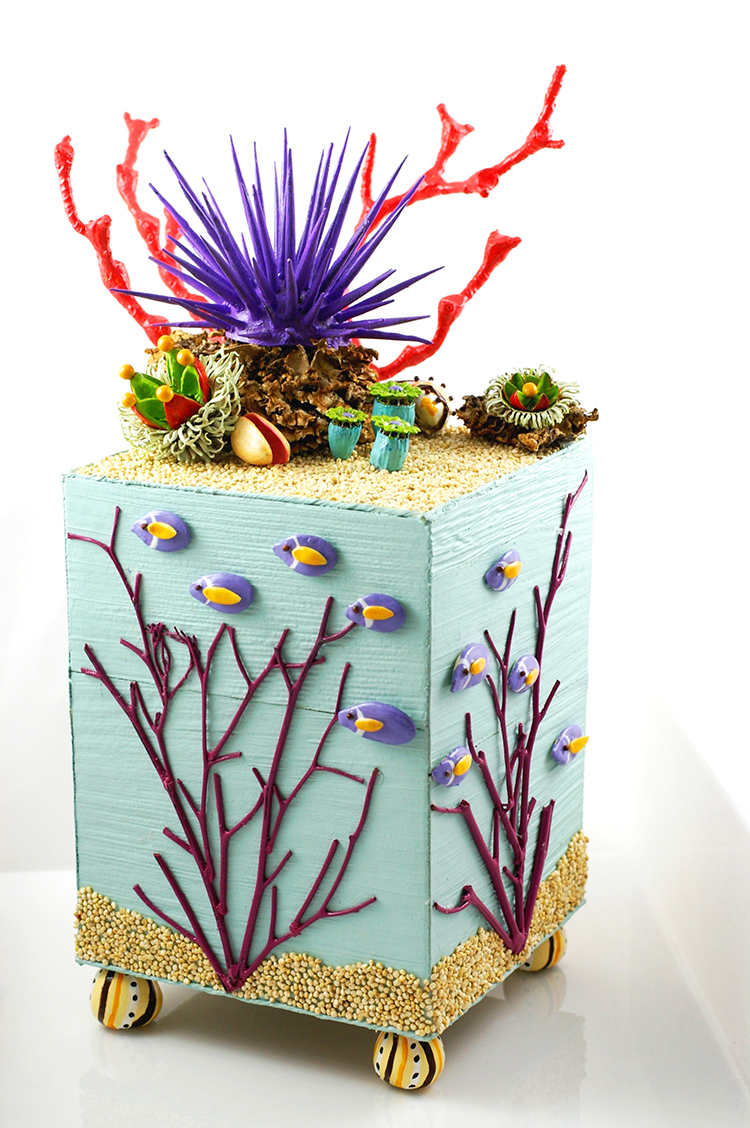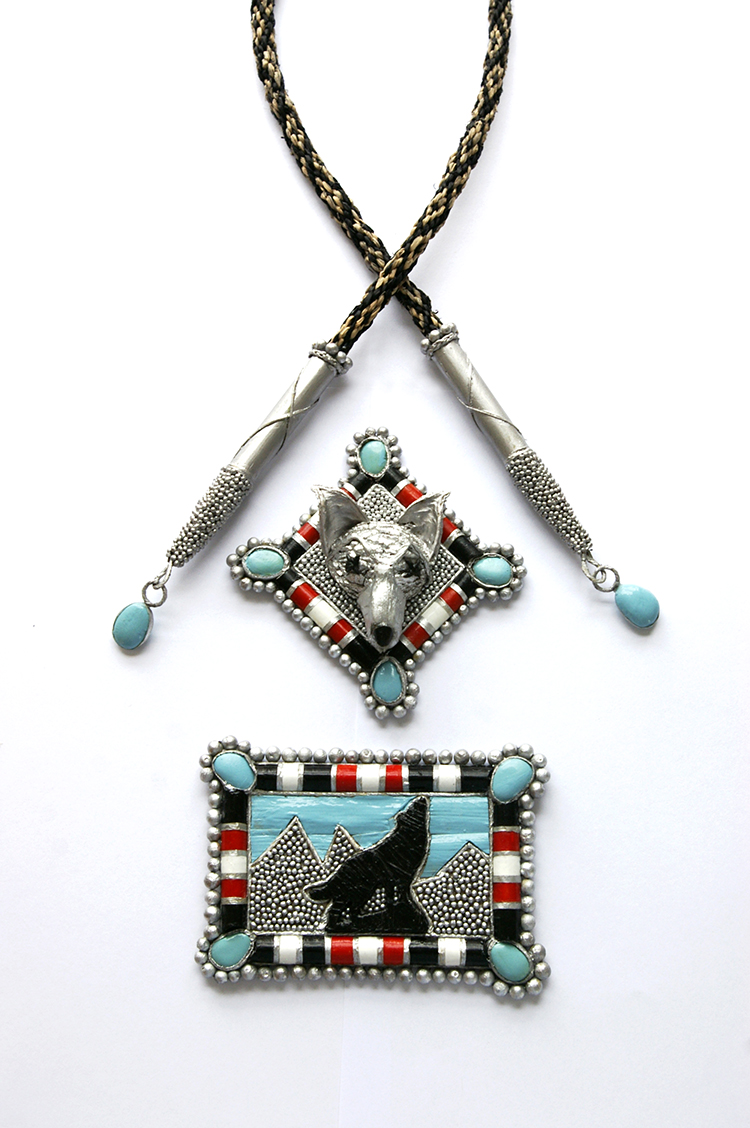Necklace

The links were made by twisting and wrapping thin pieces of damp corn husk around a dowel. Once dry the spiral was cut into rings. The pearls are coffeeberry seeds, the coral and turquoise beads are peony seeds. The small white flowers are pistachio shells, crape mrytle pods and mustard seeds. The large orange flowers are pine cone petals, acorn caps and mustard seeds.
Souvenir Box

The spiny sea urchin is a mockernut shell with honey locust thorns attached sitting on natural tree fungus. The coral branch is deciduous magnolia. The funky anemones to the right and left on the top are curly burr oak acorn heads with franklinia pods and mustard seeds. The 'sand' is quinoa. The feet are acorns.
Bolo Tie & Buckle

I dyed raffia and wove two colors to create the diamond-pattern bolo tie. The ends are slices of bamboo attached to pencil points with mustard seeds granulature. The wolf head is a black walnut with jimson weed ears and a sculpey nose finished with raffia. The wolf in the buckle was cut from balsa wood and wrapped with raffia.
Brooch

The cloud is a gingko leaf and the rows of crops are strips of corn husk. The windmills are cantaloupe seeds with vanes of mint stems. The blue bow is corn husk and the big pearl is an acorn. The little pearls are mung beans and the frame is a piece of balsa wood wrapped with raffia.
Memphis Milano

The vertcial supports are bamboo stems. The seat is faced on the top and sides with cattail leaves. The green curved line is grape vine. The small orange ball is a pin oak acorn and the arm rest is a cut and pressed circle of citrus peel.
Necklace

The jade 'grapes' are acorns with mustard seeds glued to the bottoms. The pearls are dried yellow peas. The back of the necklace is woven raffia and all the mechanics are wrapped with raffia.
Jewelry Box

The dancer's skirt is a lotus pod and her bodice is a jacaranda pod. Her head is an acorn with burr acorn cap hair. The mirror is a sea grape leaf. The exterior is contrasting directions of corn husk with cantaloupe seeds, mustard seeds, and acorn feet.
Earrings

Based on a Jean Schlumberger design for Tiffany, the fish heads are pistachio shells. The spine is small sections of mint stems threaded with pieces of citrus peel. The fins are cardamom pods with mustard seeds.
Walking Stick

This walking stick, titled, "A Bird in the Hand" features a body made of Sculpey covered with individually applied pine needles and tulip poplar seed petals. The head is a black walnut with a trumpet vine pod beak. The nest was woven from sticks, twigs, and raffia and affixed to the top of a bamboo stick.